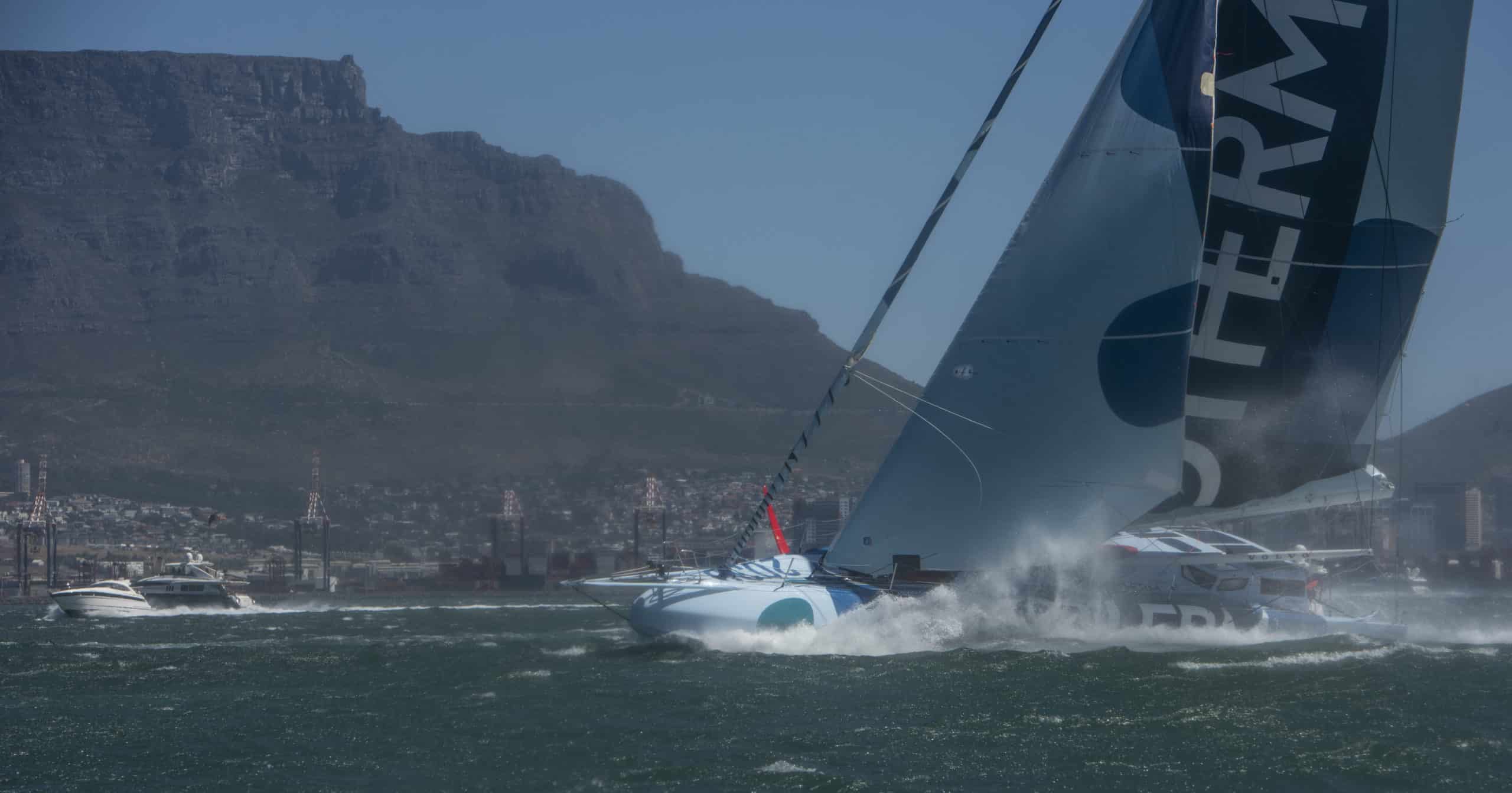This is the first year the Ocean Race has been attempted since 2018, with 11 boats taking part in a journey expected to last six months, finishing early July. During the Ocean Race stop in Cape Town, South Africa, recently, French sailor Kevin Escoffier spoke about how you discover more about yourself in the high seas than in any other sport.
The Ocean Race has long caught the imagination of many a sailor, a chance to traverse the high seas in a battle of physical and mental strength that pushes those who take part to the very limit of their endurance.
First attempted in 1973, it is in essence a race across the globe, making various ports of call along the way, with the quickest to navigate the various legs the winner.
This is the first year the event has been attempted since 2018, with 11 boats taking part in a race that is expected to last all of six months, finishing in early July.
The boats will cover 32,000 nautical miles (59,200 kilometers) and there are seven legs, starting in the Spanish port of Alicante, before stops in Praia (Cape Verde), Cape Town, Itajaí (Brazil), Rhode Island (United States) and Aarhus (Denmark), the first of three In-Port races along with The Hague (Netherlands) and Genoa (Italy).
Although shorter than previous races (which have lasted up to nine months), the 2023 edition is certainly still very challenging and the real danger of upset in, at times, treacherous conditions is always there.
Frenchman Kevin Escoffier, who is skipper of the boat Holcim PRB, is in his third Ocean Race, having finished third in 2014 and won in 2018.
He admits it is hard graft but says you discover more about yourself in these conditions on the sea than in almost any other sport.
“You learn a lot about yourself, about the sea and about your boat very quickly, because there is no room for error,” Escoffier told FORBES AFRICA during the Ocean Race stop in Cape Town.
“I am lucky that I have experience in my crew because you need that if you hope to be successful. It is a very challenging race and there are many things that can be a setback.
“We only launched this boat in May 2022, so from that point of view it is very new. Not all boats are the same. They have their own character, and you have to learn that personality quickly.”
Although it is a race, Escoffier says the key as a skipper is actually to pace yourself, the crew and the boat. Trying to push too hard on any of those three things can have dire consequences.
“You have to find a steady rhythm, not always trying to be at 110% of what the boat is able to do. You don’t want to push too much because the boat can be at sea for 35 days or however long the leg is. It can be exhausting for everyone.”
Escoffier is the leader of crew, but even though he has won this race before, admits key to his role is allowing other people to contribute and to utilize his crew’s knowledge to the best of their abilities.
It is a lesson for life too, about being willing to hear what those around you have to say and not lead with absolute authority, even if it is ultimately your reputation on the line.
“It’s very important in a crew to use all the experience on board, even if they do not have experience in the Ocean Race itself.
As a skipper, you have to be able to listen to everybody and that each person is able to come with their skills and their ideas, even if it is ultimately up to me as the skipper to decide what to do.
“I always encourage the crew to come with their own ideas and find solutions to go faster by pushing less on the boat, if that makes sense. How can we be more efficient?”
Escoffier says that, even months into the race, they are still trying to work out the best combinations for Holcim PRB to reach optimum performance in all weather conditions.
“We are still working on the sails, in each leg we are modifying the speed of the boat, depending on the twin speed and the twin angle we are using, and monitoring the software that we have on board,” he says.
“We’re always learning and pushing a bit harder, but there’s plenty to do, we’ve got a long list of what we want to try in the race.
“We learn every day how to go faster. And it’s amazing how fast these boats can go, but again, the race is long and it’s very, important… I know from my previous Ocean Races that you have to adapt as you go along.
“You cannot say, ‘we will start the race like that and finish doing the same things’. You have to adapt to what is happening around you.”
All of the stops in the race present a chance for the crew to explore the country they are in and find their land legs again. The boats spent around two weeks in Cape Town.
“It is the third time I have come to Cape Town, and I had a great time with my wife and family, it was a chance to see them again,” Escoffier said. “It’s a beautiful city and a door to the Southern Seas in the head of all sailors.
“That means it’s the ‘Hell’s Door’ for us,” he joked, in reference to the treacherous third leg in the Southern Atlantic that is the most challenging of the Ocean Race.
“But it’s so beautiful in Cape Town, I like to eat and there is so much good food, so I enjoyed that a lot. We had a wonderful time.”
